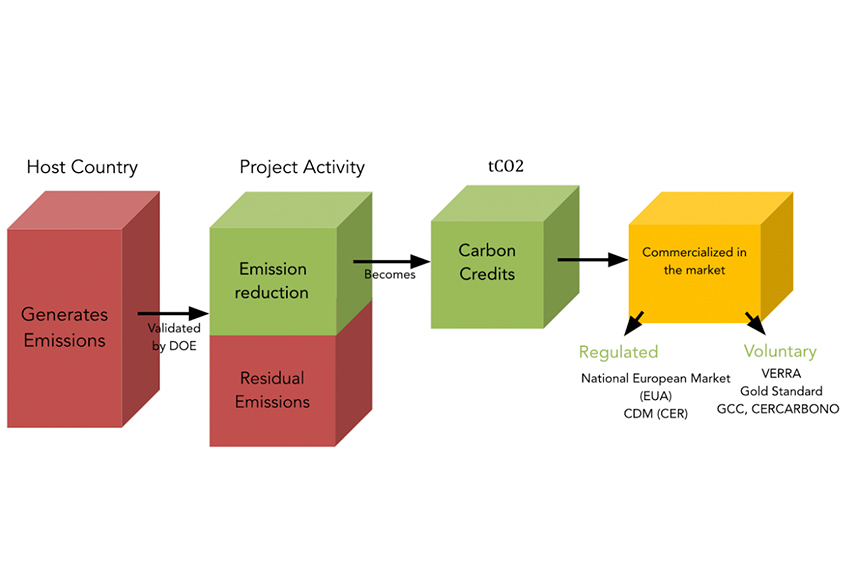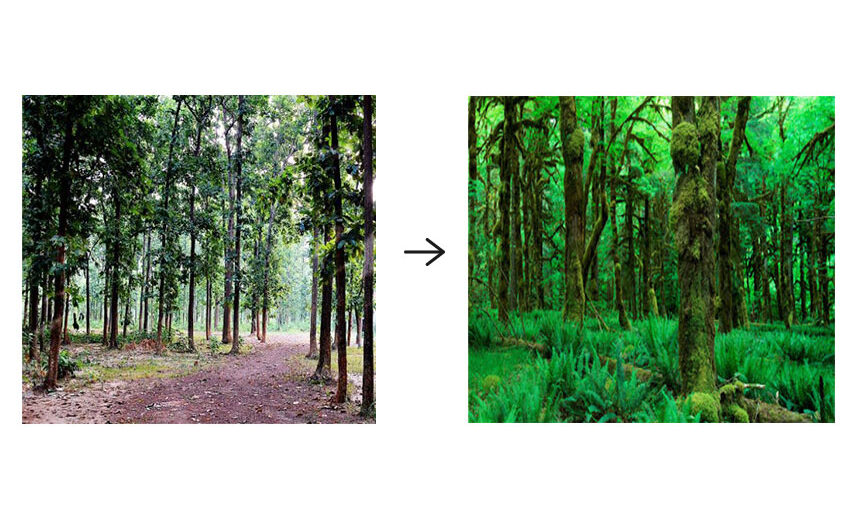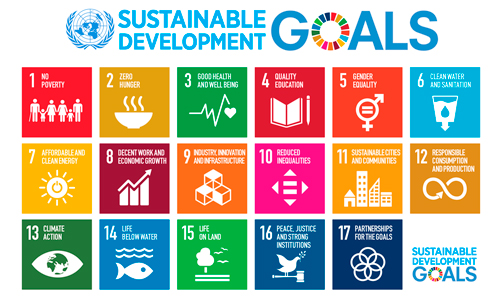A few things on carbon projects
When it comes to types of forestry projects, it is necessary to talk about a type of carbon project. It is highly important to understand what they are, how they originate and what they generate.
Carbon projects are equivalent to an initiative, most of the time privately led, which must demonstrate that, with its implementation, will obtain a reduction of greenhouse gas (GHG) emissions in a real, permanent and verifiable way. Carbon projects are developed mainly for two reasons:
- a voluntary environmental motive called stewardship
- complying with the obligations imposed by the national emissions trading program
Carbon projects became very important after the implementation of phase 1 of the Kyoto Protocol in 2005, which prescribed that these projects can only be recognised if they have been validated by a Clean Development Mechanism (CDM) entity, the Designated Operational Entity DOE, under the United Nations Framework Convention on Climate Change. Or being validated by other carbon programs recognized in the Voluntary carbon Market as VERRA, GS, etc.
This measure helped the carbon market to grow and allowed the emission reductions, resulting from these projects, to be converted into carbon credits.
In summary, the process for reducing emissions and converting them into carbon credits thanks to a carbon project is as follows:

What is a Forestry Project?
Knowing that it is a kind of Carbon Project, we can go deeper into Forestry Projects. Carbon Projects include several activities to reduce emissions. To simplify, we’ll divide them into two types:

Forestry projects are a type of carbon project which proposes a solution to climate change based on nature (NBS). With its implementation and application, a forestry project is able to avoid or absorb carbon emissions. The difference between avoidance and absorption is given by the type of project.
Types of Forestry projects
Within the NBS or AFOLU (Agriculture, Forestry, and Other Land Use), we’ll identify five different types of methodologies or land uses:

ARR: Afforestation, Reforestation and Revegetation
Afforestation and Reforestation are both methodologies that help us absorb emissions. The difference between them is that Afforestation consists of planting trees where there has never been a forest and Reforestation consists of planting trees where there used to be a forest.

ALM: Agricultural Land Management
It is very necessary to counteract the emissions generated by modern farming, which emits approximately 11-14% of global GHG emissions, due to the use of fertilisers and poor agricultural/farming practices. Sustainable agriculture is based on the use of organic fertilisers, avoiding the burning of agricultural residues, and working more efficiently and effectively on the soil. This in order to increase its capacity to store carbon.

IFM: Improved Forest Management
To improve forest management, three methodologies are highlighted:
- RIL (Reducing Impact Logging): The intensively planned and carefully controlled implementation of timber harvesting operations to minimise environmental impacts on forest stands and soils.
- ERA (Extended Rotation Agriculture): Is a system of growing different kinds of crops in recurrent succession on the same land.
- LtPF (Logged to Protected Forest): This category includes practices that reduce net GHG emissions by converting logged forests to protected forests. By eliminating harvesting for timber, biomass carbon stocks are protected and can increase as the forest re-grows and/or continues to grow

REDD & REDD+: Reduction of Emission from Deforestation and Degradation
These methodologies consist of protecting, conserving, and sustainably managing forests. REDD+ implies that beyond avoiding deforestation, sustainable development issues such as local jobs and biodiversity are covered.

WRC: Wetland Reforestation and Conservation
They are mainly based on conserving wetlands intact, either in a planned or unplanned manner. Mainly, these are Mangroves, trees/shrubs that grow on the shores of the sea or in fresh waters. They protect shorelines from erosion, storms and provide habitat for many species and animals.
Mangroves can easily work with REDD+ and A/R methodologies. The best thing about this type of ecosystem is that it absorbs up to five times more carbon than a conventional terrestrial ecosystem.

The WRC projects can generate 10 to 100 TNCO2eq per hectare per year.
Conclusion
In these times, nature-based solutions are increasingly recognized as having a great impact on the fight against climate change.
To summarise, the forestry projects have two main objectives:
- Increasing carbon stocks (through plantations and agricultural land management)
- Avoid carbon leakage, such as REDD+ and IFM projects.
Most forestry projects and land uses are aligned with the Sustainable Development Goals (SGDs), however, some ARR projects that use exotic Species tend to focus only on carbon.
It follows that nature is used to solve socio-economic and environmental challenges. It is a very cost-effective tool and brings many environmental and social co-benefits, especially in native communities.
At ALLCOT Trading, we offer all kinds of forestry projects for our clients and we help them choose the best options for their corporate action plan. If you want to achieve this in a fair, transparent and win-win scenario, contact us and together we will make it happen.



